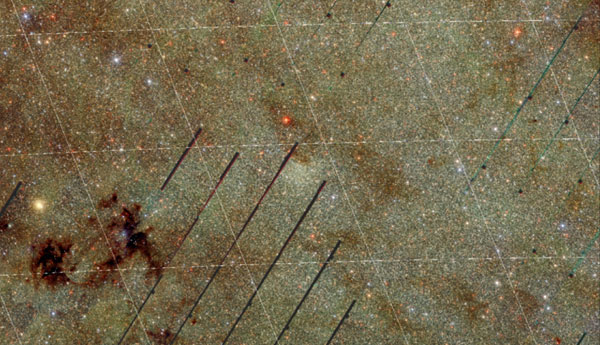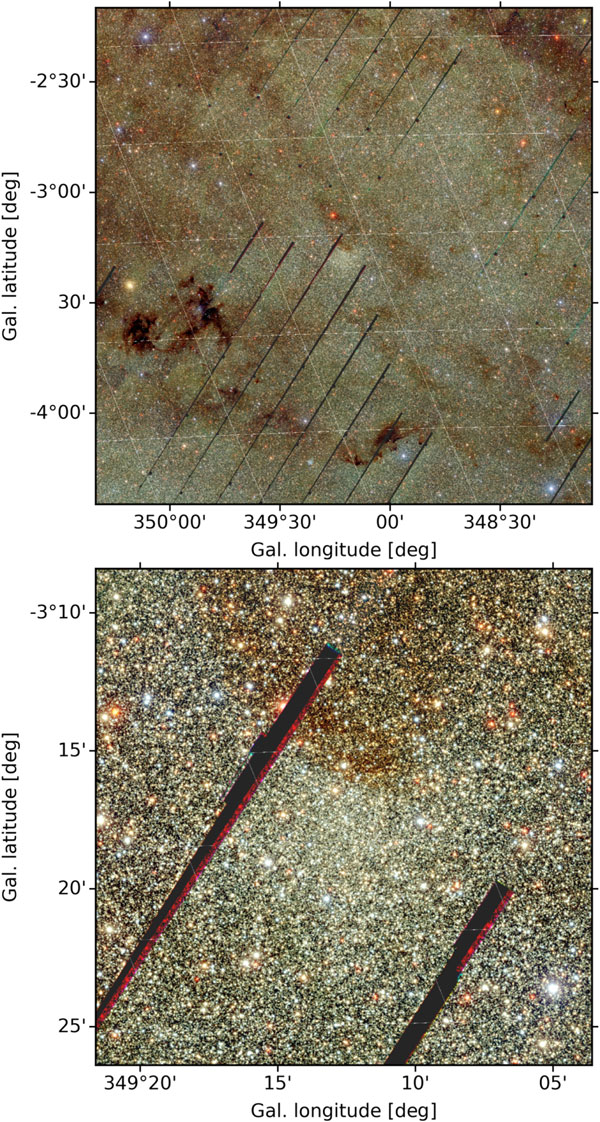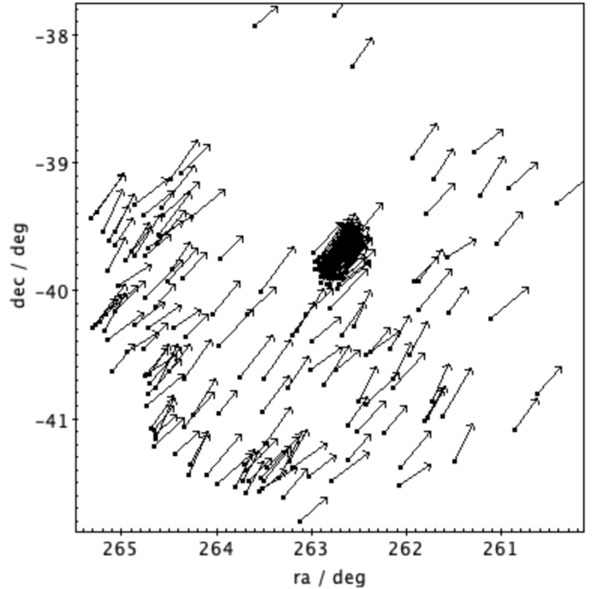AAS Nova brings us the story of a newly discovered cluster of stars. But the jury's out as to whether this group is a typical ancient stellar cluster or something more.

Barbá et al. 2019
You might think that we’d already discovered all the large clusters of stars orbiting our galaxy. Surprisingly, there are still detections to be made — such as the recently discovered cluster FSR 1758. But is this large group of stars an enormous globular cluster? Or a newly detected dwarf galaxy?
A New Cluster

Barbá et al. 2019
FSR 1758 was first discovered last year, hiding in the extremely dense bulge at the center of our galaxy. Objects in the galactic bulge are very difficult to detect: due to the high density of surrounding stars and dust, not much of the light of bulge objects makes it to us.
Based on the limited observations we initially had of FSR 1758 — and because clusters residing in the galactic bulge are typically expected to be of low mass — it was assumed that this object was a globular cluster: a spherical collection of stars that all formed around the same time from the same cloud and are bound by their mutual gravity.
But could the difficulty peering into the galactic bulge mean that we’re missing important details? Another theory posits that the part of FSR 1758 we’re seeing is instead the nucleus of a faint dwarf galaxy orbiting the Milky Way; we simply can’t see the fainter outer reaches of the galaxy.
So which is it: globular cluster or dwarf galaxy? A team of scientists led by Rodolfo Barbá (University of La Serena, Chile) have gathered observations to find out.
Revealing Details
Barbá and collaborators use three different sets of observations to explore FSR 1758: optical data from Gaia’s DR2 and the DECam Plane Survey, and near-infrared data from the VISTA Variables in the Via Lactea Extended Survey. From these data, the authors determine the cluster’s position and distance, as well as its size, metallicity, absolute magnitude, and proper motion.

Barbá et al. 2019
FSR 1758 has a number of intriguing properties. If it’s a globular cluster, it’s one of the largest around our galaxy — and the part that we see is probably just the metaphorical tip of the iceberg, as much of its population is likely hidden by contamination and reddening due to its location in the galactic bulge. Furthermore, FSR 1758’s properties don’t fit known relationships for globular clusters, such as the correlation between size and metallicity.
Lastly, the authors find additional asymmetrically distributed stars further out in the field with motions and colors indicating that they also belong to FSR 1758. These suggest that the cluster may be more extended than originally thought and might have tidal tails. These signs support a picture in which FSR 1758 is the nucleus of a dwarf galaxy — which the authors tentatively name the Scorpius dwarf galaxy.
Though we still don’t have a definitive answer about FSR 1758’s nature, we can hope that future spectral data for its stars will settle the debate. And in the meantime, it’s good to be reminded that our galaxy is still hiding some surprising discoveries.
Citation
“A Sequoia in the Garden: FSR 1758—Dwarf Galaxy or Giant Globular Cluster?,” Rodolfo H. Barbá et al. 2019 Astrophysical Journal Letters 870 L24. doi:10.3847/2041-8213/aaf811
This post originally appeared on AAS Nova, which features research highlights from the journals of the American Astronomical Society.
 2
2









Comments
tom-dasilva
February 19, 2019 at 10:37 am
need clarification. in the galactic bulge, or behind the galactic bulge?
You must be logged in to post a comment.
Anthony Barreiro
February 19, 2019 at 2:48 pm
I had the same question, so I looked at Barba et al.'s article, available at the link at the end of this report. FSR 1758 is about 1600 parsecs (5200 light years) from the galactic center and 470 pc (1500 ly) south of the plane of the galaxy. It is in the galactic bulge. This is from Barba et al.'s introduction:
"Very recently, Cantat-Gaudin et al. (2018), on the basis of
the Gaia optical color–magnitude diagram (CMD), proposed
another object, [FSR2007] 1758 (hereafter FSR 1758), to be a
new GC located toward the Bulge. This serendipitous
discovery was made while studying 1229 open clusters and
noticing the striking proper motion (PM) separation from the
field stellar population. They estimated a Galactocentric
distance RG = 1600 pc and a height below the plane
z = −470 pc, which places it inside the Bulge itself. "
You must be logged in to post a comment.
You must be logged in to post a comment.